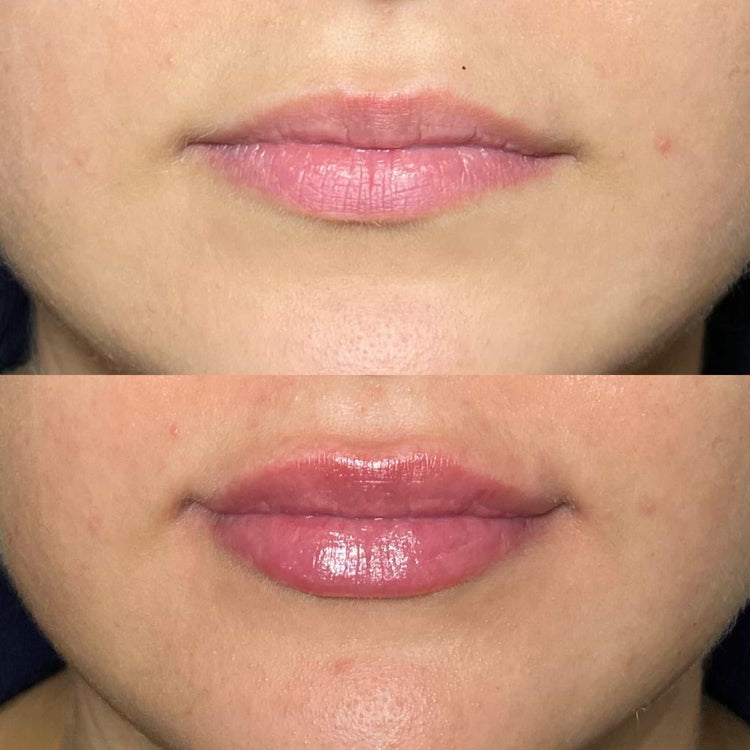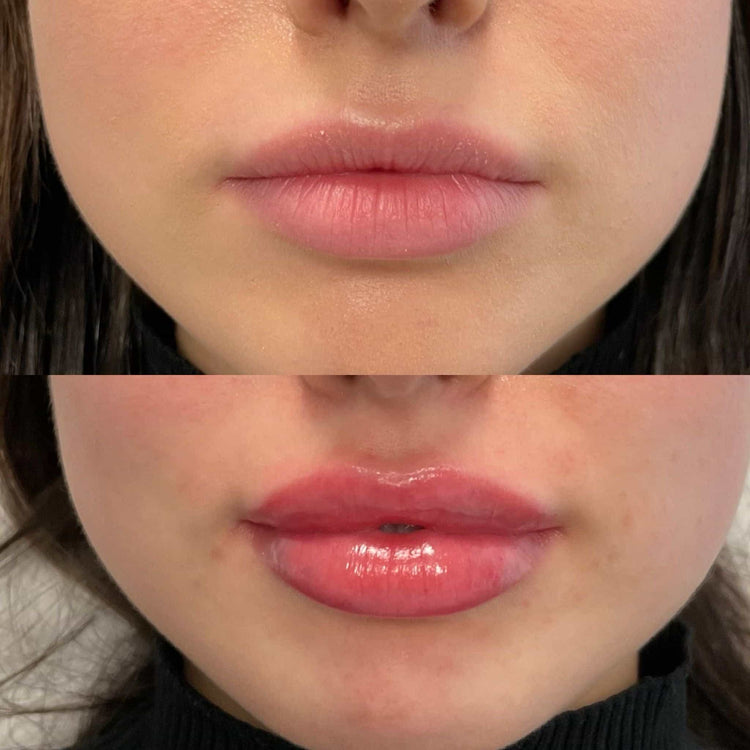What Are The Risks Of DIY Lip Injections?
Risks Associated with DIY Lip Injections
Injecting fillers into your lips without proper medical supervision can be incredibly dangerous.
Infection
Injecting fillers into your lips without proper medical supervision can lead to a number of serious risks, including infection. Using unsterile equipment or improperly prepared filler can introduce bacteria into the tissues, leading to inflammation, pain, and potentially life-threatening complications.
Allergic Reactions
Injecting fillers into your lips without proper medical supervision can be incredibly dangerous.
One major risk is allergic reactions. Filler substances often contain ingredients that some individuals may be sensitive or allergic to. These reactions can range from mild irritation and redness to severe, life-threatening anaphylaxis.
Scarring and Unevenness
DIY lip injections pose a significant risk of scarring. Injecting fillers improperly can cause tissue damage and inflammation, leading to the formation of raised scars or uneven texture.
Another major concern with DIY lip injections is the potential for unevenness. Without proper training and experience, it’s difficult to distribute filler evenly, resulting in lumps, bumps, or an asymmetrical appearance.
Asymmetrical Lips
Injecting fillers into your lips without proper medical supervision can be incredibly dangerous.
Asymmetrical lips are a major risk associated with DIY lip injections. Without proper training and experience, it’s difficult to distribute filler evenly, resulting in lumps, bumps, or an asymmetrical appearance. This can significantly impact your self-confidence and appearance.
Nerve Damage
A particularly dangerous risk of DIY lip injections is nerve damage. The lips are highly vascularized with a complex network of nerves. Incorrectly injecting filler too close to these nerves can cause them to be damaged, leading to numbness, tingling, or even permanent loss of sensation in the lips and surrounding areas.
Nerve damage can also result in muscle weakness or paralysis, making it difficult to control lip movements for speaking, eating, and smiling. These complications can significantly impact a person’s quality of life.
Vascular Occlusion
One particularly dangerous risk associated with DIY lip injections is vascular occlusion. This occurs when a blood vessel becomes blocked by the injected filler material.

Vascular occlusion can have serious consequences, including tissue damage, necrosis (death of tissue), and even stroke if a blood vessel in the brain is affected.
Blood Clots
Injecting fillers into your lips without proper medical supervision can be incredibly dangerous.
One major risk is allergic reactions. Filler substances often contain ingredients that some individuals may be sensitive or allergic to. These reactions can range from mild irritation and redness to severe, life-threatening anaphylaxis.
DIY lip injections pose a significant risk of scarring. Injecting fillers improperly can cause tissue damage and inflammation, leading to the formation of raised scars or uneven texture.
Another major concern with DIY lip injections is the potential for unevenness. Without proper training and experience, it’s difficult to distribute filler evenly, resulting in lumps, bumps, or an asymmetrical appearance.
- Asymmetrical lips are a major risk associated with DIY lip injections. Without proper training and experience, it’s difficult to distribute filler evenly, resulting in lumps, bumps, or an asymmetrical appearance. This can significantly impact your self-confidence and appearance.
- A particularly dangerous risk of DIY lip injections is nerve damage. The lips are highly vascularized with a complex network of nerves. Incorrectly injecting filler too close to these nerves can cause them to be damaged, leading to numbness, tingling, or even permanent loss of sensation in the lips and surrounding areas.
- Nerve damage can also result in muscle weakness or paralysis, making it difficult to control lip movements for speaking, eating, and smiling. These complications can significantly impact a person’s quality of life.
One particularly dangerous risk associated with DIY lip injections is vascular occlusion. This occurs when a blood vessel becomes blocked by the injected filler material.
Vascular occlusion can have serious consequences, including tissue damage, necrosis (death of tissue), and even stroke if a blood vessel in the brain is affected.

Incorrect Dosage
Injecting fillers into your lips without proper medical supervision can be incredibly dangerous.
- Infection: Using unsterile equipment or improperly prepared filler can introduce bacteria into the tissues, leading to inflammation, pain, and potentially life-threatening complications.
- Allergic Reactions: Filler substances often contain ingredients that some individuals may be sensitive or allergic to. These reactions can range from mild irritation and redness to severe, life-threatening anaphylaxis.
- Scarring: Injecting fillers improperly can cause tissue damage and inflammation, leading to the formation of raised scars or uneven texture.
- Unevenness: Without proper training and experience, it’s difficult to distribute filler evenly, resulting in lumps, bumps, or an asymmetrical appearance.
- Nerve Damage: The lips are highly vascularized with a complex network of nerves. Incorrectly injecting filler too close to these nerves can cause them to be damaged, leading to numbness, tingling, or even permanent loss of sensation.
- Vascular Occlusion: This occurs when a blood vessel becomes blocked by the injected filler material. It can lead to tissue damage, necrosis (death of tissue), and even stroke.
Long-Term Complications
DIY lip injections pose numerous risks that can have lasting consequences for your appearance and health.
Infection is a serious concern when fillers are injected without sterile procedures. Bacteria from unsterile equipment or improperly prepared filler can enter the tissues, causing inflammation, pain, and potentially life-threatening infections.
Allergic reactions to filler ingredients are another significant risk. These reactions can range from mild skin irritation to severe anaphylaxis, a life-threatening allergic response.
DIY lip injections significantly increase the risk of scarring. Improper injection techniques can damage tissues and cause inflammation, leading to raised scars or uneven texture.
One major concern with DIY injections is achieving a symmetrical appearance. Without proper training, it’s challenging to evenly distribute filler, resulting in lumps, bumps, or an asymmetrical appearance that can impact self-confidence.
Nerve damage is a particularly dangerous risk associated with DIY lip injections. The lips are rich in nerves, and injecting filler too close to these nerves can cause them to be damaged.
Nerve damage can lead to numbness, tingling, or permanent loss of sensation in the lips and surrounding areas. It can also result in muscle weakness or paralysis, affecting lip movements for speaking, eating, and smiling, significantly impacting quality of life.
Vascular occlusion, a serious complication of DIY injections, occurs when a blood vessel becomes blocked by the injected filler material.
This blockage can lead to tissue damage, necrosis (death of tissue), and even stroke if a blood vessel in the brain is affected.
Safety Considerations for Lip Fillers
DIY lip injections may seem tempting as a shortcut to fuller lips, but they carry significant risks that can have lasting consequences for your health and appearance.
Choosing a Licensed Professional
Choosing a licensed professional is crucial when considering lip fillers. Look for a board-certified dermatologist, plastic surgeon, or nurse practitioner with experience in administering dermal fillers.

Ensure the practitioner has proper training and qualifications. Ask about their experience with lip augmentation and review before-and-after photos to assess their aesthetic style.
Inquire about the specific type of filler they use and discuss your desired outcome.
Don’t hesitate to ask questions about their sterilization protocols, safety measures, and any potential risks or side effects.
It’s important to choose a reputable clinic with a clean and sterile environment.
A consultation allows you to discuss your goals, concerns, and expectations with the practitioner, ensuring they understand your desired outcome and can advise on the best course of action for you.
Sterilization and Cleanliness
Safety is paramount when considering lip fillers. Using unsterile equipment or improperly prepared filler can introduce bacteria into the tissues, leading to infections that may be difficult to treat.
Sterilization protocols should be strictly followed at any clinic offering cosmetic injections.
This includes using single-use needles and syringes, sterilizing instruments with autoclaves, and ensuring a clean and sanitized environment to minimize the risk of cross-contamination.
Cleanliness extends beyond just the physical space; practitioners should also adhere to strict hand hygiene practices before and after each procedure.
Product Quality and Source
When considering lip fillers, product quality and source are crucial factors for safety. Opting for fillers from reputable manufacturers who comply with regulatory standards is essential. These manufacturers undergo rigorous testing and quality control processes to ensure the safety and effectiveness of their products.
Using unapproved or counterfeit fillers can pose serious risks, as their ingredients and purity may be unknown or potentially harmful.
Always inquire about the specific brand and type of filler your practitioner uses and ask for proof of authenticity.
Understanding Potential Risks and Side Effects
Injecting fillers into your lips without proper medical supervision can be incredibly dangerous.
- Infection: Using unsterile equipment or improperly prepared filler can introduce bacteria into the tissues, leading to inflammation, pain, and potentially life-threatening complications.
- Allergic Reactions: Filler substances often contain ingredients that some individuals may be sensitive or allergic to. These reactions can range from mild irritation and redness to severe, life-threatening anaphylaxis.
- Scarring: Injecting fillers improperly can cause tissue damage and inflammation, leading to the formation of raised scars or uneven texture.
- Unevenness: Without proper training and experience, it’s difficult to distribute filler evenly, resulting in lumps, bumps, or an asymmetrical appearance.
- Nerve Damage: The lips are highly vascularized with a complex network of nerves. Incorrectly injecting filler too close to these nerves can cause them to be damaged, leading to numbness, tingling, or even permanent loss of sensation.
- Vascular Occlusion: This occurs when a blood vessel becomes blocked by the injected filler material. It can lead to tissue damage, necrosis (death of tissue), and even stroke.
Book your lip enhancement consultation with Dr. Laura Geige at It’s Me & You Clinic
- How Long Does Lip Filler Take To Settle - August 15, 2025
- How Long Does It Take For Kratom Gummies To Work? - August 14, 2025
- How Long Do Results From Traptox Trapezius Botox Treatment Last - August 12, 2025
